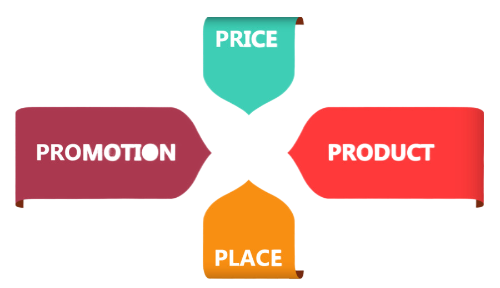Introduction
In the modern era of digital marketing, the classic marketing mix framework known as the 4Ps of Marketing has evolved to adapt to online platforms and strategies. Understanding the 4Ps of Digital Marketing—Product, Price, Place, and Promotion—helps businesses develop effective online marketing strategies that reach their target audiences and convert them into loyal customers.
In this extensive guide, we will explore how the 4Ps of Digital Marketing apply to today’s digital landscape, their importance, and how businesses can effectively leverage them to achieve their marketing goals. We will also address some frequently asked questions to provide comprehensive insights.
What are the 4Ps of Digital Marketing?
The 4Ps of Digital Marketing are foundational elements used to define marketing strategies across digital platforms. These components are:
- Product: The goods or services that satisfy consumer needs.
- Price: The cost customers are willing to pay for the product.
- Place: The platforms or channels where the product is accessible.
- Promotion: The methods used to reach and attract customers.
Importance of the 4Ps in Digital Marketing
- Enhances customer targeting.
- Optimizes marketing campaigns.
- Improves conversion rates.
- Strengthens brand positioning.
- Ensures consistency across marketing channels.
Product in Digital Marketing
The first element of the 4Ps is the Product. In digital marketing, it refers to both tangible and intangible offerings, including software, applications, services, e-books, and more.
Key Considerations
- Quality and Features: Ensure the product meets customer expectations.
- Brand Identity: Create a strong online presence through branding.
- Product Differentiation: Highlight unique features to stand out from competitors.
- Customer Experience (CX): Enhance user experience for better engagement.
Example
Consider a subscription-based SaaS tool that provides cloud storage solutions. Highlighting unique features like enhanced security, scalability, and user-friendly interfaces can make the product appealing to the target audience.
Price in Digital Marketing
Pricing strategies in digital marketing differ from traditional marketing due to the transparency and competitiveness of the online marketplace.
Key Considerations
- Competitive Analysis: Compare prices with competitors to remain attractive.
- Dynamic Pricing: Adjust prices based on demand, time, and audience.
- Discounts and Offers: Utilize promotions to attract new customers.
- Value-Based Pricing: Align pricing with the value delivered to customers.
Example
E-commerce platforms like Amazon and eBay often use dynamic pricing models to optimize sales and attract price-sensitive customers.
Place in Digital Marketing
In the digital world, Place refers to the online channels and platforms where products are made available to consumers.
Key Considerations
- Website Optimization: Ensure user-friendly design and navigation.
- SEO (Search Engine Optimization): Enhance online visibility through search engines.
- Social Media Channels: Reach target audiences on platforms like Facebook, Instagram, LinkedIn, etc.
- E-commerce Platforms: Use marketplaces like Shopify, Amazon, or Etsy for product distribution.
Example
A clothing brand using Instagram Shopping and Facebook Ads to reach potential customers, while also maintaining a high-quality website for direct sales.
Promotion in Digital Marketing
Promotion encompasses all online marketing efforts to boost product awareness and sales.
Key Considerations
- Content Marketing: Create valuable blog posts, videos, and infographics.
- Email Marketing: Reach customers directly with personalized messages.
- Paid Advertising (PPC): Utilize Google Ads, Facebook Ads, etc.
- Influencer Marketing: Collaborate with social media influencers to promote products.
Example
Launching a targeted Google Ads campaign for a new product and promoting it through email newsletters.
Integrating the 4Ps in Digital Marketing Strategy
Combining the 4Ps of Digital Marketing creates a holistic strategy that ensures success in the online landscape. Marketers must continuously analyze and adapt their strategies to remain relevant and competitive.
Tips for Integration
- Monitor analytics and adjust strategies accordingly.
- Use A/B testing to determine effective promotional techniques.
- Focus on delivering consistent messaging across all platforms.
- Develop customer personas to better target audiences.
FAQs
- What is the importance of the 4Ps in digital marketing?
- The 4Ps help businesses formulate comprehensive strategies that cover product development, pricing, distribution, and promotion, ensuring effective market penetration.
- Can the 4Ps be applied to content marketing?
- Yes, content marketing requires careful planning of the product (content type), price (free or paid), place (platform), and promotion (SEO, social media, etc.).
- How do I integrate the 4Ps into my digital marketing strategy?
- Start by analyzing your product, setting a competitive price, choosing the right platforms, and promoting effectively using digital tools.
- What are some examples of Promotion in digital marketing?
- SEO, PPC ads, influencer collaborations, social media campaigns, and email marketing.
- How do I measure the effectiveness of my 4Ps strategy?
- Use analytics tools like Google Analytics, social media insights, and conversion tracking to measure performance.
Conclusion
Understanding and applying the 4Ps of Digital Marketing is essential for building a successful online marketing strategy. By analyzing and optimizing your Product, Price, Place, and Promotion, you can effectively reach your target audience and enhance your brand’s presence in the digital world.







